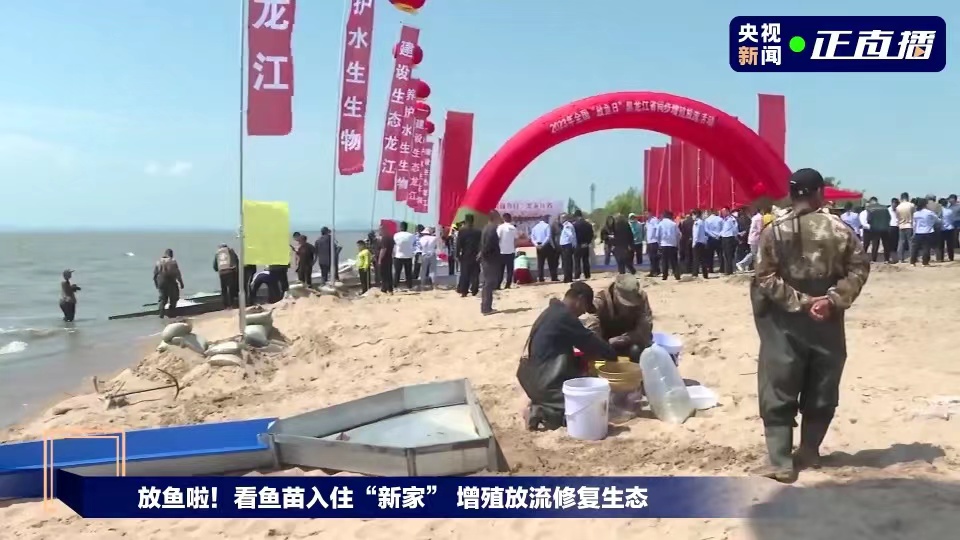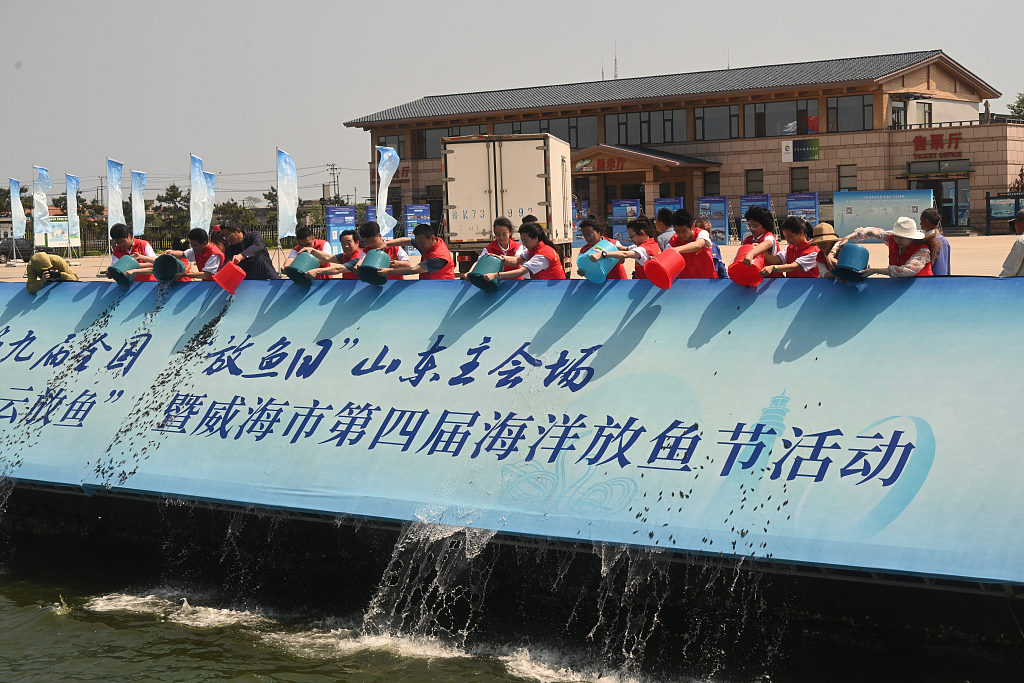Early in the morning, a department of fisheries released more than 2 million fish fry into Ganjiang River in east China's Jiangxi Province, a tributary of the Yangtze River. Among those fish fry are the four major Chinese carps including black carp, grass carp, chub and bighead carp.

A department of fisheries releases more than 2 million fish fry into Ganjiang River in east China's Jiangxi Province on June 6, 2023.
A department of fisheries releases more than 2 million fish fry into Ganjiang River in east China's Jiangxi Province on June 6, 2023.
While in Xingkai Lake in northeast China's Heilongjiang Province, some 300 volunteers joined the releasing activity to release more than 5 million fish fry which include a famous local type of fish, "big white fish."
"We have been releasing fish in the lake on this day every year since 2003," said Teng Hongjun, deputy chief of the agricultural law enforcement team in Mishan City in the province.

Some 300 volunteers join the releasing activity to release more than 5 million fish fry on Jue 6, 2023.
Some 300 volunteers join the releasing activity to release more than 5 million fish fry on Jue 6, 2023.
Today marks China's Fish Releasing Day, aiming at restoring ecosystems through breeding and releasing fish and raising people's ecological awareness. In 2015, China's Ministry of Agriculture and Rural Affairs set June 6 as the national "Fish Release Day," with releasing activities carried out across the country.
The releasing activity is usually held around June 6 because it's at the turn of spring and summer, which is the growth and breeding season for fish. Also, as the fishing ban in China is usually between May and September annually, it is the time when fish fry can grow well.

Volunteers release fish fry in Weihai City, east China's Shandong Province. /CFP
Volunteers release fish fry in Weihai City, east China's Shandong Province. /CFP
When releasing fish fry, the choice of fish species is a key issue. Species that were originally abundant in the basin but have since declined are generally selected for release. Also, the release of fish species should be beneficial to environmental restoration. For example, algal feeding fish are preferred in some eutrophic lakes, while in lakes where aquatic plants are damaged, fewer fish should be released that may damage aquatic plants.
The release of fish not only increases their numbers, but also restores ecosystems. According to Dai Nianhua, a researcher at Jiangxi Academy of Science, Poyang Lake is a typical example of ecological restoration. Under the combined effect of the release of fish and the 10-year fishing ban which was implemented starting from January 1, 2021, in the natural waters along the river's main stream and important tributaries, the number of fish has increased, providing richer food for birds. Before, the number of oriental white storks in the area in winter was about 2,000 to 3,000, but in recent two years, the number has reached 7,000 to 8,000.
In addition to commercial fish, endangered aquatic wildlife such as Yangtze sturgeon and Yangtze finless porpoise have also been released into the wild. According to the 14th Five-Year Plan, the number of released aquatic wildlife will be about 150 billion by 2025.
(If you want to contribute and have specific expertise, please contact us at nature@cgtn.com.)